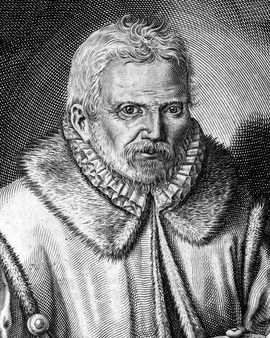A harsh loner, but a brilliant artist. These words aptly describe the German-Jewish painter and graphic artist Ury Lesser. Born as the son of a master baker in the small town of Birnbaum, Ury moved with his family to Berlin after the death of his father. At the young age of 16 he began studying painting at one of the leading art academies in Germany in Düsseldorf. In the course of his artistic development, Ury visited the art metropolises of Brussels, Paris, Munich and Flanders, but his continuing affection for the big city of Berlin led him back there afterwards.
In his art, his preference for the city of Berlin is almost conspicuous, with its landscapes, streets and cafés repeatedly providing motifs and sources of inspiration for his works. Especially Ury's pastel techniques for the faithful depiction of reflections and light reflections give his works a recognizable character. In contrast to other well-known impressionists of his time, such as Max Liebermann, Lovis Corinth or Max Slevogt, Ury was a rising star from comparatively poor circumstances. This can also be seen in his works of art, because it is not the bourgeoisie of Berlin that inspires him. Restless streets, dynamically torching lanterns in the dark or the hectic traffic bustle interest him more and are depicted in a lively way.
Ury was and remained a loner to the end. Despite his admission to the Berlin Secession, a community of artists with a significant contribution to German Impressionism, he stayed away from the joint sessions of the Secession. His original character increasingly led to friction with other artists. In particular, his relationship with Max Liebermann, the then president of the Berlin Secession, is immortalized with anecdotes about their enmity. However, his critical personality also led to increased demand for his works of art and made Liebermann's attempt to hold back Ury's success more difficult. Ury had a greater impact at the Secession after Liebermann's presidency was replaced by Lovis Corinth.
×





_-_(MeisterDrucke-684885).jpg)
_-_(MeisterDrucke-684885).jpg)
.jpg)
.jpg)
.jpg)
.jpg)
.jpg)
.jpg)
.jpg)
.jpg)
.jpg)
.jpg)
.jpg)
.jpg)
.jpg)
.jpg)
.jpg)
.jpg)
.jpg)
.jpg)
.jpg)
.jpg)
 - (MeisterDrucke-173054).jpg)
 - (MeisterDrucke-173054).jpg)
.jpg)
.jpg)
.jpg)
.jpg)
.jpg)
.jpg)
.jpg)
.jpg)
.jpg)
.jpg)
.jpg)
.jpg)
.jpg)
.jpg)
.jpg)
.jpg)
.jpg)
.jpg)
 1905-07 - (MeisterDrucke-591297).jpg)
 1905-07 - (MeisterDrucke-591297).jpg)
_c1920_(oil_on_canvas)_-_(MeisterDrucke-1431264).jpg)
_c1920_(oil_on_canvas)_-_(MeisterDrucke-1431264).jpg)
.jpg)
.jpg)
.jpg)
.jpg)
.jpg)
.jpg)
.jpg)
.jpg)
.jpg)
.jpg)
.jpg)
.jpg)
 - (MeisterDrucke-680623).jpg)
 - (MeisterDrucke-680623).jpg)
.jpg)
.jpg)
.jpg)
.jpg)
_-_(MeisterDrucke-687291).jpg)
_-_(MeisterDrucke-687291).jpg)
.jpg)
.jpg)
.jpg)
.jpg)
 - (MeisterDrucke-680801).jpg)
 - (MeisterDrucke-680801).jpg)
.jpg)
.jpg)
_-_(MeisterDrucke-687080).jpg)
_-_(MeisterDrucke-687080).jpg)
.jpg)
.jpg)
.jpg)
.jpg)
.jpg)
.jpg)
.jpg)
.jpg)
_-_(MeisterDrucke-687002).jpg)
_-_(MeisterDrucke-687002).jpg)
.jpg)
.jpg)
.jpg)
.jpg)
.jpg)
.jpg)
.jpg)
.jpg)
 - (MeisterDrucke-267433).jpg)
 - (MeisterDrucke-267433).jpg)
.jpg)
.jpg)
.jpg)
.jpg)
.jpg)
.jpg)
.jpg)
.jpg)
.jpg)
.jpg)
_-_(MeisterDrucke-685144).jpg)
_-_(MeisterDrucke-685144).jpg)
.jpg)
.jpg)
.jpg)
.jpg)
.jpg)
.jpg)
.jpg)
.jpg)
.jpg)
.jpg)
.jpg)
.jpg)
.jpg)
.jpg)
 - (MeisterDrucke-683548).jpg)
 - (MeisterDrucke-683548).jpg)
.jpg)
.jpg)
.jpg)
.jpg)
_-_(MeisterDrucke-687166).jpg)
_-_(MeisterDrucke-687166).jpg)
.jpg)
.jpg)
.jpg)
.jpg)
.jpg)
.jpg)
.jpg)
.jpg)
.jpg)
.jpg)
.jpg)
.jpg)
.jpg)
.jpg)
_-_(MeisterDrucke-687158).jpg)
_-_(MeisterDrucke-687158).jpg)
.jpg)
.jpg)
.jpg)
.jpg)
.jpg)
.jpg)
.jpg)
.jpg)
.jpg)
.jpg)
.jpg)
.jpg)
_-_(MeisterDrucke-686989).jpg)
_-_(MeisterDrucke-686989).jpg)
.jpg)
.jpg)
.jpg)
.jpg)
.jpg)
.jpg)
.jpg)
.jpg)
.jpg)
.jpg)
.jpg)
.jpg)
.jpg)
.jpg)
.jpg)
.jpg)
.jpg)
.jpg)
.jpg)
.jpg)
.jpg)
.jpg)
.jpg)
.jpg)
.jpg)
.jpg)
.jpg)
.jpg)
.jpg)
.jpg)
.jpg)
.jpg)
.jpg)
.jpg)
.jpg)
.jpg)
.jpg)
.jpg)
.jpg)
.jpg)






